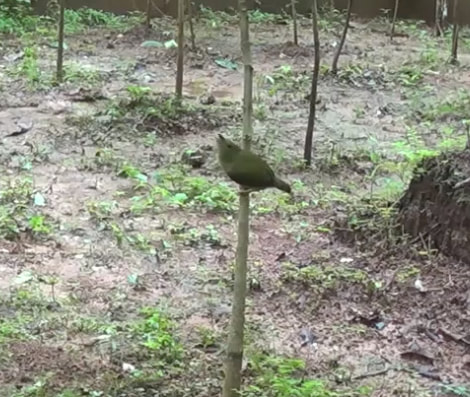I am interested in understanding the neural and hormonal mechanisms underlying vocal and other communication behaviors.
Adult neurogenesis and singing behavior in Fife fancy canaries
Songbirds have high rates of neurogenesis in the HVC, a telencephalic nucleus part of the "song system" - a specialized network of brain nuclei that controls singing behavior. What is the role of new neurons incorporated at the onset of the breeding season?
Sonogram of typical canary trills
Ablation of neural progenitors at the source of migration to HVC showed slight changes in song production and activity in auditory centers.
Pictures: HVC nucleus delineated by arrows (Nissl stain); DCX-positive neurons that recently migrated into the HVC; expression of the immediate early gene ZENK in the caudomedial mesopalium (CMM), an auditory area.

Acrobatic courtship behavior of golden-collared manakins
Hormonal activation of complex display
I used hormonal implants to look at sex differences in the activation of the courtship "dance" of golden-collared manakins. Females treated with testosterone performed some of the display elements typical of males suggesting that the neural circuitry for display behavior is developed or develops rapidly in response to hormonal treatment. Treated juvenile males showed differences in performance and particularly in vocal behavior compared to non-treated controls.








